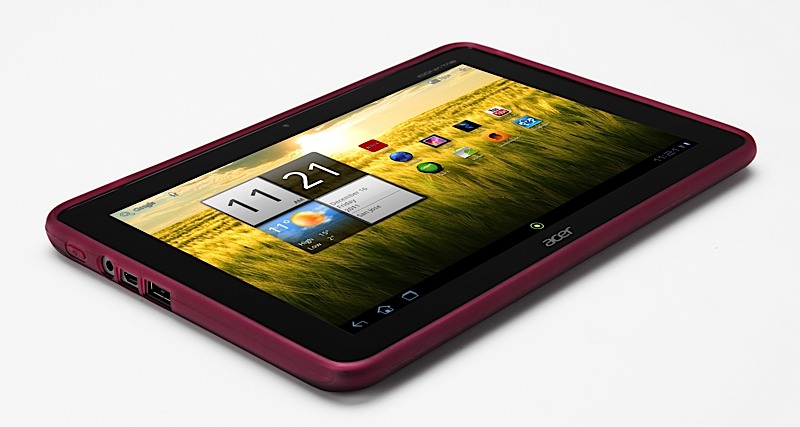HOME
TOPICS
ABOUT ME
The A200 has two USB ports (that's two more than the iPad, if you're keeping count).
Starting our fourth decade: Al Fasoldt's reviews and commentaries, continuously online for 30 years

THE ACER A200 has a wide screen, unlike the iPad's squarish display. It also has two USB ports and a slot for a memory card for extra storage.
An iPad competitor from Acer
March 17, 2013
By Al Fasoldt
Copyright © 2013, Al Fasoldt
Copyright © 2013, The Post-Standard
There are three problems with the iPad.
First, it's too expensive. Even the iPad mini, at $329 for the basic version, costs too much.
Second, there's no way to add storage. If you buy a 16 GB iPad and find out you need more capacity, you're stuck. Apple just poked you one.
Third, getting stuff into and out of an iPad requires a passport. Whatever happened to the idea of plugging in a hard drive or -- perish the thought! -- a thumbdrive?
That hasn't mattered to Apple -- it's selling iPads in record numbers -- but it's given other manufacturers a chance to show consumers what they are missing. An example is a line of tablets from Acer, one of the world's biggest computer manufacturers.
Acer's A200 got a few hoots from the Apple fanboy press when it came out last year. The screen, they said, wasn't as bright as the iPad's, it didn't have two cameras like the iPad and was just not up to Apple's design standards for thinness and weight, despite the fact that the A200 is less than half an inch thick and weighs no more than a mug of coffee.
They failed to mention a lot of plusses. The Acer 200's screen is larger than the iPad's display -- 10.1 inches compared to 9.7 -- and uses the modern HDTV widescreen format instead of the iPad's old-fashioned squarish shape. The A200 has two USB ports (that's two more than the iPad, if you're keeping count) and it has a memory card slot so you can add storage easily. Keeping score? The Acer's memory card slot is one more than the iPad has. And the back has a nonslip coating, unlike the iPad's slippy-slidey aluminum surface.
Another plus is the price. The A200 lists for $330 for a version with 8 GB of internal storage. To add storage, just plug in a 32 GB Micro SD memory card. In a few months, 64 GB cards will be readily available. The A200 I bought was a factory refurbished model that cost $229. It came with a 32 GB card.
Geeks who know about tablets might be surprised that I haven't mentioned what, to many, is the most important feature of the A200 and of nearly all the other non-Apple tablets. It runs Android, which is sorta-kinda like the iPad's operating system except for a much wider range of functions and features.
Unlike iPads, which can only run software ("apps") approved by Grandma Apple, Android tablets can run any Android app, no matter who created or approved it -- or, more to the point, who didn't. Besides the apps, there are so many advantages to Android that I've set aside next week's column just for that.
As for my A200, the screen is gorgeous, the display is bright and the built-in GPS can locate a Frisbee in the desert. The operating system, the "Ice Cream Sandwich" version of Android -- yes that's the real name -- is smooth and responsive. Surprisingly, the built-in onscreen keyboard is vastly better in many ways than the one on my iPad, and I can actually type fairly quickly.
Next: Android's secret weapon.